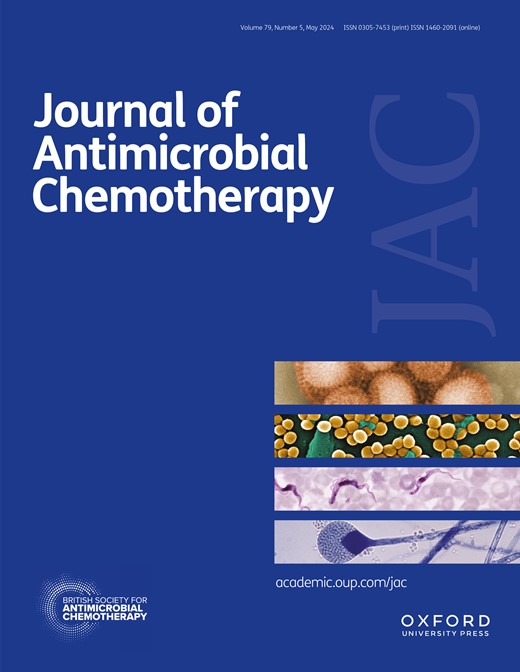Clinically important interactions of macrolides and tetracyclines with dietary interventions—a systematic review with meta-analyses
IF 3.9
2区 医学
Q1 INFECTIOUS DISEASES
引用次数: 0
Abstract
Background Effective management of drug–food interactions is crucial for enhancing antibiotics’ efficacy/safety. Adhering to PRISMA guidelines, we conducted a systematic review to assess the impact of dietary interventions on the bioavailability of 15 macrolides and 10 tetracyclines. Methods We included studies examining the influence of food, beverages, antacids, and mineral supplements on the pharmacokinetic parameters of orally administered macrolides and tetracyclines. We searched Medline (via PubMed), Embase and Cochrane Library databases up to December 2022. Risk of bias was assessed using Cochrane and NIH tools. Quantitative analyses were conducted if two or more comparable food-effect studies were available; otherwise, a qualitative summary was provided. Results We included 120 studies from 97 reports. Meta-analyses were conducted for 8 macrolides and 4 tetracyclines, with qualitative synthesis for 10 and 9, respectively. About 64% of the studies were open-label, crossover designs. Our assessment found that 37% of the studies had a high risk of bias, while only 6% had low risk. Food significantly affected 10 of 13 macrolides (77%) and 6 of 7 tetracyclines (86%). High positive effects on bioavailability were seen with extended-release azithromycin and clarithromycin, and erythromycin estolate. High negative impacts were observed with erythromycin propionate and stearate, azithromycin capsules, demeclocycline and omadacycline. Antacids and mineral supplements significantly decreased tetracyclines absorption. Milk and grapefruit juice showed variable impacts on absorption. Discussion Interactions depend on antibiotics’ physicochemical characteristics, intervention type, drug formulation and potential patient factors. The quality of evidence was rated low due to outdated studies, methodological diversity and unequal data availability.大环内酯类药物和四环素类药物与膳食干预的临床重要相互作用--带荟萃分析的系统综述
背景 有效管理药物与食物的相互作用对于提高抗生素的疗效和安全性至关重要。根据 PRISMA 指南,我们进行了一项系统性综述,以评估饮食干预对 15 种大环内酯类药物和 10 种四环素类药物生物利用度的影响。方法 我们纳入了有关食物、饮料、抗酸剂和矿物质补充剂对口服大环内酯类和四环素类药物药代动力学参数影响的研究。我们检索了截至 2022 年 12 月的 Medline(通过 PubMed)、Embase 和 Cochrane Library 数据库。使用 Cochrane 和 NIH 工具评估了偏倚风险。如果有两项或更多可比较的食物效应研究,则进行定量分析;否则,提供定性总结。结果 我们纳入了 97 份报告中的 120 项研究。对 8 种大环内酯类药物和 4 种四环素类药物进行了元分析,并分别对 10 种和 9 种药物进行了定性分析。约 64% 的研究采用了开放标签、交叉设计。我们的评估发现,37%的研究存在高偏倚风险,只有 6% 的研究存在低偏倚风险。食物对 13 种大环内酯类药物中的 10 种(77%)和 7 种四环素类药物中的 6 种(86%)有明显影响。缓释阿奇霉素、克拉霉素和红霉素酯对生物利用度的积极影响较大。丙酸红霉素和硬脂酸红霉素、阿奇霉素胶囊、地美环素和奥马德西环素的负面影响较大。抗酸剂和矿物质补充剂会明显减少四环素的吸收。牛奶和葡萄柚汁对吸收的影响各不相同。讨论 相互作用取决于抗生素的理化特性、干预类型、药物配方和患者的潜在因素。由于研究过时、方法多样和数据不平等,证据质量被评为较低。
本文章由计算机程序翻译,如有差异,请以英文原文为准。
求助全文
约1分钟内获得全文
求助全文
来源期刊
CiteScore
9.20
自引率
5.80%
发文量
423
审稿时长
2-4 weeks
期刊介绍:
The Journal publishes articles that further knowledge and advance the science and application of antimicrobial chemotherapy with antibiotics and antifungal, antiviral and antiprotozoal agents. The Journal publishes primarily in human medicine, and articles in veterinary medicine likely to have an impact on global health.

 求助内容:
求助内容: 应助结果提醒方式:
应助结果提醒方式:


